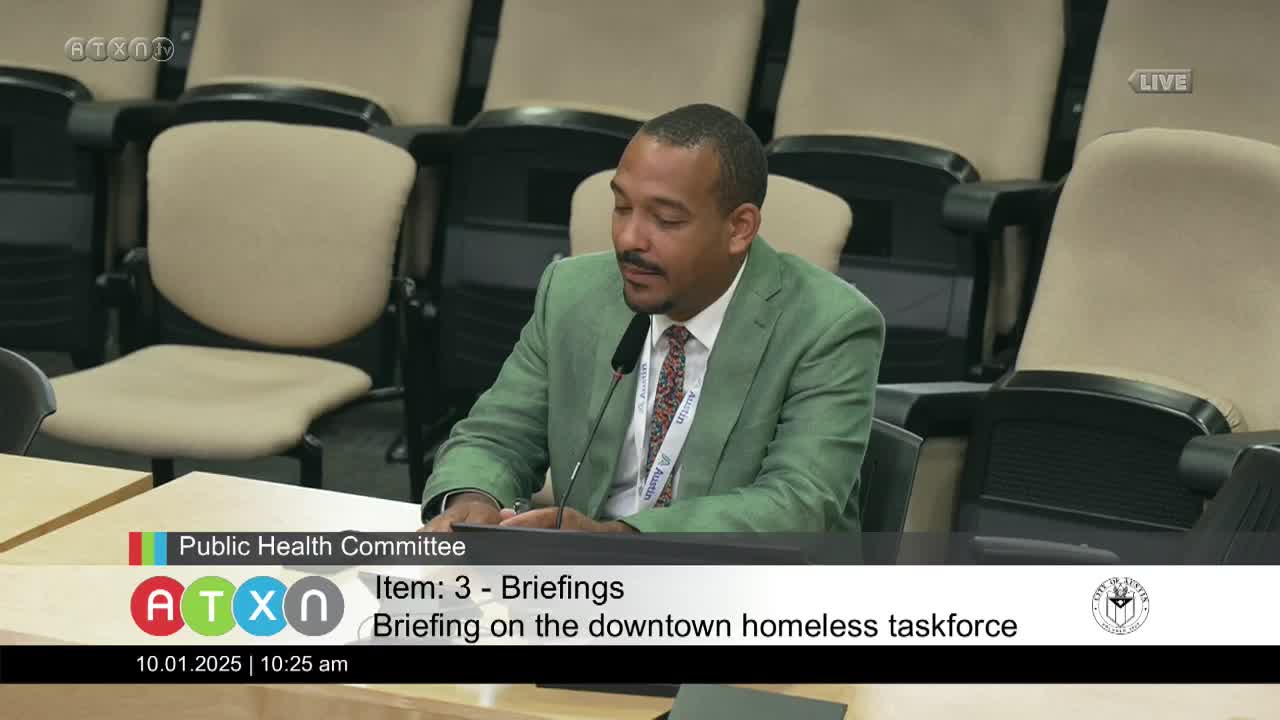Austin Task Force Addresses Homelessness and Resource Optimization Strategies
October 01, 2025 | Austin, Travis County, Texas
This article was created by AI summarizing key points discussed. AI makes mistakes, so for full details and context, please refer to the video of the full meeting. Please report any errors so we can fix them. Report an error »

In a recent meeting of the Public Health Committee in Austin, Texas, officials discussed critical strategies to address homelessness and improve the efficiency of health and social services in the city. The meeting highlighted the need for systemic changes to prevent individuals from being discharged from hospitals directly into homelessness, particularly in downtown areas.
One of the primary focuses was on identifying "pain points" within the current system that lead to such discharges. Officials emphasized the importance of reimagining existing resources, such as bridge shelters, to better serve individuals transitioning from hospitals or jails. By optimizing these resources, the committee aims to provide safe landing spots for those in need, ensuring they receive the necessary support and housing connections.
The committee also addressed the issue of neighboring jurisdictions, such as Georgetown and Round Rock, sending individuals to Austin without adequate support. This practice has raised concerns about sustainability and the need for collaboration with these areas. Officials expressed a desire to engage in discussions with these jurisdictions to encourage their participation in solutions and to share technical expertise in developing their own resources.
Additionally, the meeting underscored the importance of state support and funding to enhance local efforts. Officials noted ongoing conversations with the Texas Department of Criminal Justice to address the needs of individuals transitioning from state facilities to the community. The committee aims to advocate for more resources to ensure that these individuals receive proper housing navigation and support services.
Overall, the discussions at the Public Health Committee meeting reflect a proactive approach to tackling homelessness in Austin. By focusing on systemic improvements, collaboration with neighboring jurisdictions, and securing state support, the committee aims to create a more effective and sustainable response to the challenges faced by vulnerable populations in the city. As these initiatives progress, the committee will continue to monitor outcomes and explore further opportunities for enhancement in the coming months.
One of the primary focuses was on identifying "pain points" within the current system that lead to such discharges. Officials emphasized the importance of reimagining existing resources, such as bridge shelters, to better serve individuals transitioning from hospitals or jails. By optimizing these resources, the committee aims to provide safe landing spots for those in need, ensuring they receive the necessary support and housing connections.
The committee also addressed the issue of neighboring jurisdictions, such as Georgetown and Round Rock, sending individuals to Austin without adequate support. This practice has raised concerns about sustainability and the need for collaboration with these areas. Officials expressed a desire to engage in discussions with these jurisdictions to encourage their participation in solutions and to share technical expertise in developing their own resources.
Additionally, the meeting underscored the importance of state support and funding to enhance local efforts. Officials noted ongoing conversations with the Texas Department of Criminal Justice to address the needs of individuals transitioning from state facilities to the community. The committee aims to advocate for more resources to ensure that these individuals receive proper housing navigation and support services.
Overall, the discussions at the Public Health Committee meeting reflect a proactive approach to tackling homelessness in Austin. By focusing on systemic improvements, collaboration with neighboring jurisdictions, and securing state support, the committee aims to create a more effective and sustainable response to the challenges faced by vulnerable populations in the city. As these initiatives progress, the committee will continue to monitor outcomes and explore further opportunities for enhancement in the coming months.
View full meeting
This article is based on a recent meeting—watch the full video and explore the complete transcript for deeper insights into the discussion.
View full meeting
